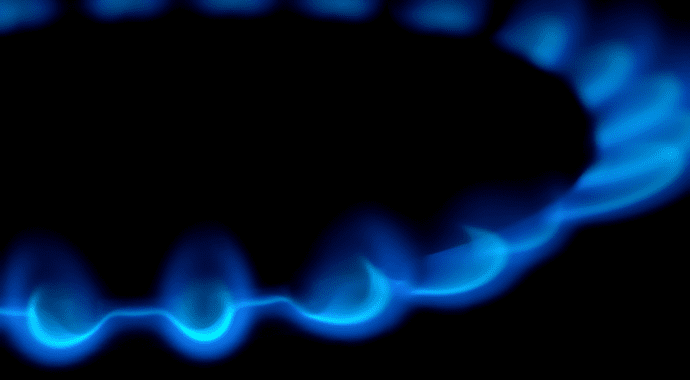유럽에 새로운 공급자가 나타나다.
유럽에서는 전통적인 에너지가 고갈되어가고 있는 관계로 비전통 에너지원에 대한 수요가 증가하고 있습니다. 환경에 대한 우려와 일본 대지진으로 인한 방사능 누출도 영향이 있다고 할 수 있죠. 이런 상황들로 인해 가스는 점점 중요한 에너지원이 돼가고 있습니다. 전통적으로 유럽은 영국과 노르웨이 연안의 대륙붕에서 생산되는 LNG를 수입하거나 러시아로부터 파이프라인을 통해 가스를 수입해서 썼습니다. 그런데 새로운 LNG 공급처가 생기고 러시아로부터 가스 수입량이 증가한데다 지역의 셰일가스가 새로운 변수로 떠올랐습니다.
몇몇 나라들, 특히 폴란드와 독일은 자국의 셰일가스를 개발하기 위해 움직이고 있습니다. 이런 상황은 러시아로부터 멀리서 들여오고 해외로부터 수입되는 LNG에 대한 대안으로 떠오르고 있습니다. 경쟁이 급격히 심해지고, 가격하락에 대한 압박이 거세지고 있죠. 예를 들어 센트리카라는 에너지회사는 최근 영국의 NBP(National Balancing Point-현물 가스가격을 결정하는 가상지표)를 기준으로 카타르와 계약을 맺었습니다. 몇몇 유럽의 회사들도 뒤를 이어 해당 지역의 가격보다 더 높은 현물 가격으로 계약을 맺었습니다. 그로 인해 전반적인 가격은 전통적인 원유연동 가격에 비해 20%나 하락했습니다.
가스가 없다면 어떨까요?
그러나 유럽은 셰일가스를 개발하는데 있어서 미국과는 다른 몇몇 큰 문제에 직면했습니다. 유전지대가 적고, 개발을 위한 인프라가 덜 갖춰졌다는 것부터 시작해 매장된 곳의 깊이가 깊어 더 깊이 파고 들어가야 한다는 것, 매장량이 적다는 것, 그리고 인구밀도가 높다는 문제점이 있습니다. 유럽 정부들은 셰일가스 개발에 대한 적절한 정책도 없고 우호적이지도 않다는 점도 문제입니다.
셰일가스 매장량이 높은 나라들조차도 환경오염에 대한 우려를 하고 있습니다. 예를 들어 프랑스는 셰일가스 개발에 대한 포기를 선언했죠. 이런 상황에도 불구하고 LNG와 파이프를 통해 들여오는 유럽의 가스 가격들은 역사적으로 봤을 때 원유 가격과 연결돼있었지만, 서서히 가스 자체의 가격결정 모델을 만들어나가고 있습니다.
가스 격전지 : 아시아/태평양 지역
아시아/태평양지역은 가스 공급자들에게 새로운 격전지로 떠오르고 있습니다. 우리는 일본, 한국, 대만 등의 전통적인 가스 수입국들의 수요가 지속적으로 증가할 것으로 내다보고 있습니다. 이 밖에 태국, 싱가포르, 베트남, 필리핀처럼 급격히 성장 중인 나라들처럼 중국과 인도에서 급격하게 수요가 늘 것으로 예상하고 있습니다. 최근에 해당 지역의 국가들은 파이프라인과 LNG선을 이용한 도입방법 이외에도 석탄층에서 캐낸 메탄(CBM)에서도 수요를 충당하고 있습니다. 서아프리카, 중동, 그리고 호주에서 생산된 가스도 아시아에 공급되고 있습니다.
또 아시아는 미국에서 LNG를 도입할 수도 있습니다. 다만 미국이 미국 영토 이외에 다른 국가로 수출을 할 것인지, 아시아 수입국들은 지분을 가지고 파이프라인을 설치하거나 현지 생산공장을 짓지 않고 액화가스 도입에만 만족할 것인지, 북미의 서해안과 중동의 걸프만, 호주, 아프리카 등과의 수송비까지 포함한 가스가격에 대해 어떻게 생각할 것인지 등 여러 요소를 감안해 결정할 것입니다. 아시아에는 이에 대해 몇몇 중요한 변수가 있습니다. 중국이 보유하고 있는 셰일가스, CBM 및 다른 에너지원을 개발해 가스발전을 시작할 것인지, 그리고 일본이 에너지안보를 위해 얼마나 빨리 에너지 믹스를 바꿀 수 있을지가 관건이죠.
치솟는 가스 가격
공급과 수요의 불확실성으로 인해 우리는 아시아/태평양 지역의 가스에 대해 세가지 시나리오를 찾을 수 있습니다. 일반적으로 이 요소들은 LNG의 가격이 원유에 기반한 가격결정체계에서 가스에 기반한 가격결정체계로 바뀌도록 작용하고 있습니다. 일본의 후쿠시마 원전 사태 이후 일시적으로 수요가 늘어서 변화가 지연될 수도 있겠죠.
How shale tilts the scale ②
New supplies for Europe
In Europe, demand for gas from unconventional sources continues to accelerate, driven by the depletion of conventional gas, ongoing environmental concerns and the Fukushima disaster’s impact on the role of nuclear power. All of these factors have made gas an increasingly important energy source.
Historically, Europe’s supply has come from a combination of LNG imports, UK and Norwegian continental shelves, other indigenous gas sources and long-haul pipeline gas imports from Russia. Now, in addition to new LNG supplies (including supplies that had been destined for North America) and more gas from Russia, a new supply option has emerged: local unconventional gas. Several countries, notably Poland and Germany, are moving quickly to tap their indigenous shale gas.
All these new supplies create alternatives to traditional LNG imports and long-haul pipeline gas from Russia. Competition has increased dramatically, and pressure to decrease prices is mounting. For example, Centrica recently signed a contract with Qatar based on the UK’s wholesale gas price (NBP). Several major buyers in Europe followed suit, leading to contracts whose terms included more spot gas prices than were typical for the region. That resulted in overall price reductions of as much as 20% off traditional oil-indexed pricing.
However, Europe faces several important challenges to developing its shale industry that are not found in North America, including significantly less oilfield service and equipment infrastructure, deeper and less homogenous shale resources and greater land access issues due to population density. European governments are also generally less familiar with shale gas extraction and do not have well-developed regulation policies to address it. Some countries, including those with high potential for shale gas, are not yet comfortable with the environmental impact on water, air and land of shale activity. France, for instance, has placed a moratorium on development. Despite these challenges, European LNG and piped-gas prices—historically linked to oil— are showing a slow shift to a gas-on-gas pricing model.
The gas battleground: Asia-Pacific
Asia-Pacific is becoming the new global battleground for gas suppliers around the world. We expect demand to grow substantially beyond the traditional buyers of Japan, Korea and Taiwan. Growth will come primarily from China and India as well as other rapidly growing Asian economies, such as Thailand, Singapore, Vietnam and the Philippines.
Currently, supply to the region comes from a combination of local conventional, pipeline, LNG imports and limited unconventional sources, mostly coal-bed methane (CBM). New gas supplies from West Africa, the Middle East and Australia also are arriving in Asia.
Asia could even import LNG from North America, though that would depend on several factors. Among them: whether the US would allow exports from either the contiguous 48 states or Alaska, whether Asian buyers would be comfortable relying on new contract structures tied to liquefaction rights only (versus equity gas ownership) and, of course, the relative cost of gas, including transportation and other logistics between North America’s west coast, the Gulf Coast, Australia, Africa and elsewhere. Asia also contains a number of potential wildcards—including China’s ability to generate its own gas supply from its indigenous shale, CBM and other sources, and how rapidly Japan will shift its fuel mix and current emphasis on supply security.
Given these supply and demand uncertainties, we see three distinct scenarios for the future of gas in Asia-Pacific Generally, these factors are facilitating a shift away from current LNG oil-indexed pricing trends toward gas-on-gas pricing—even though the temporary spike in demand from Japan after the Fukushima disaster may have delayed that shift.



![[셰일가스 시리즈②] 유럽에 새로운 공급자가 나타나다. 1 Profile edit Andy e1345693125759 LNG 에너지](/wp-content/uploads/sites/2/2012/08/Profile_edit_Andy-e1345693125759.jpg)

![[셰일가스 시리즈②] 유럽에 새로운 공급자가 나타나다. 2 Profile edit Apte e1345693139880 LNG 에너지](/wp-content/uploads/sites/2/2012/08/Profile_edit_Apte-e1345693139880.jpg)